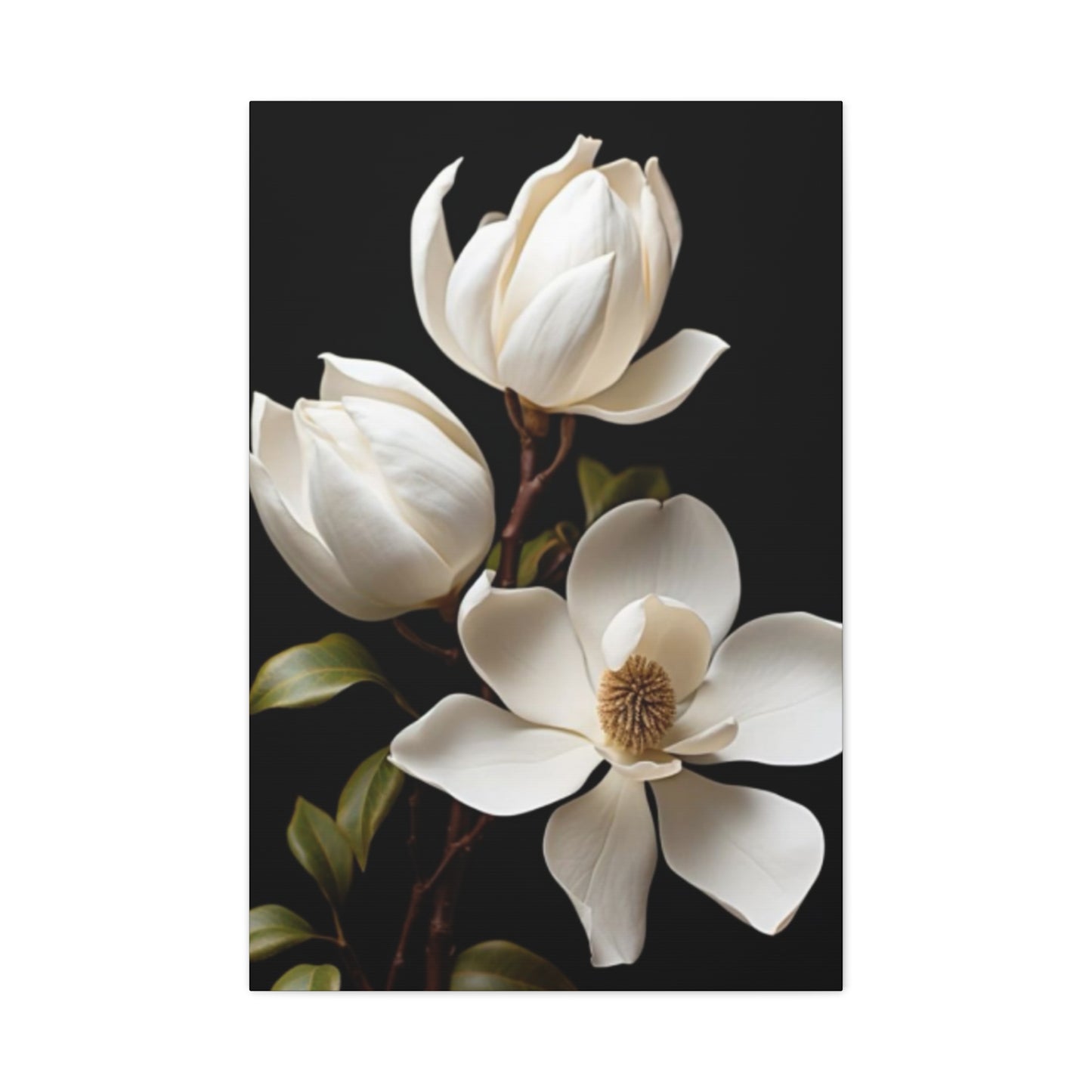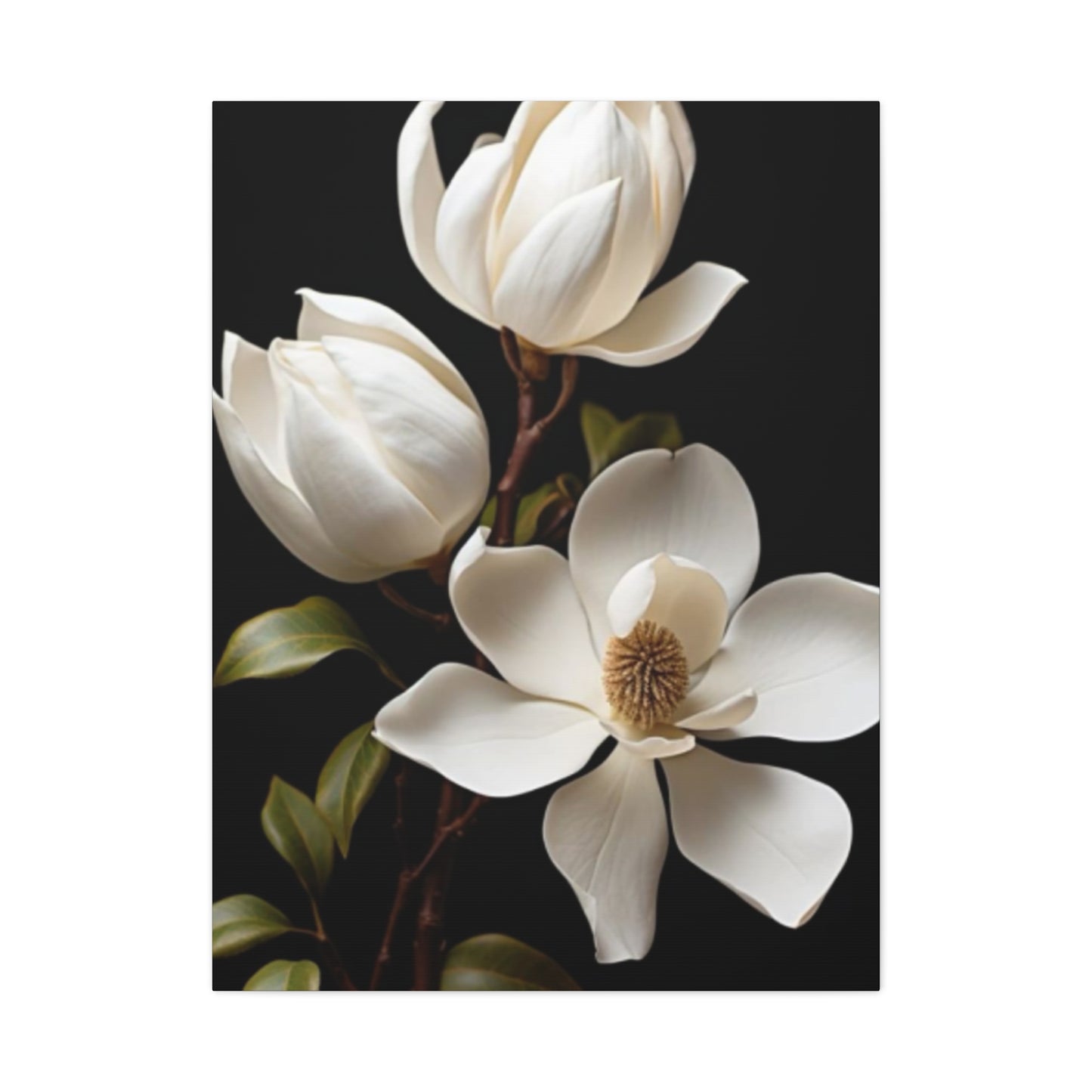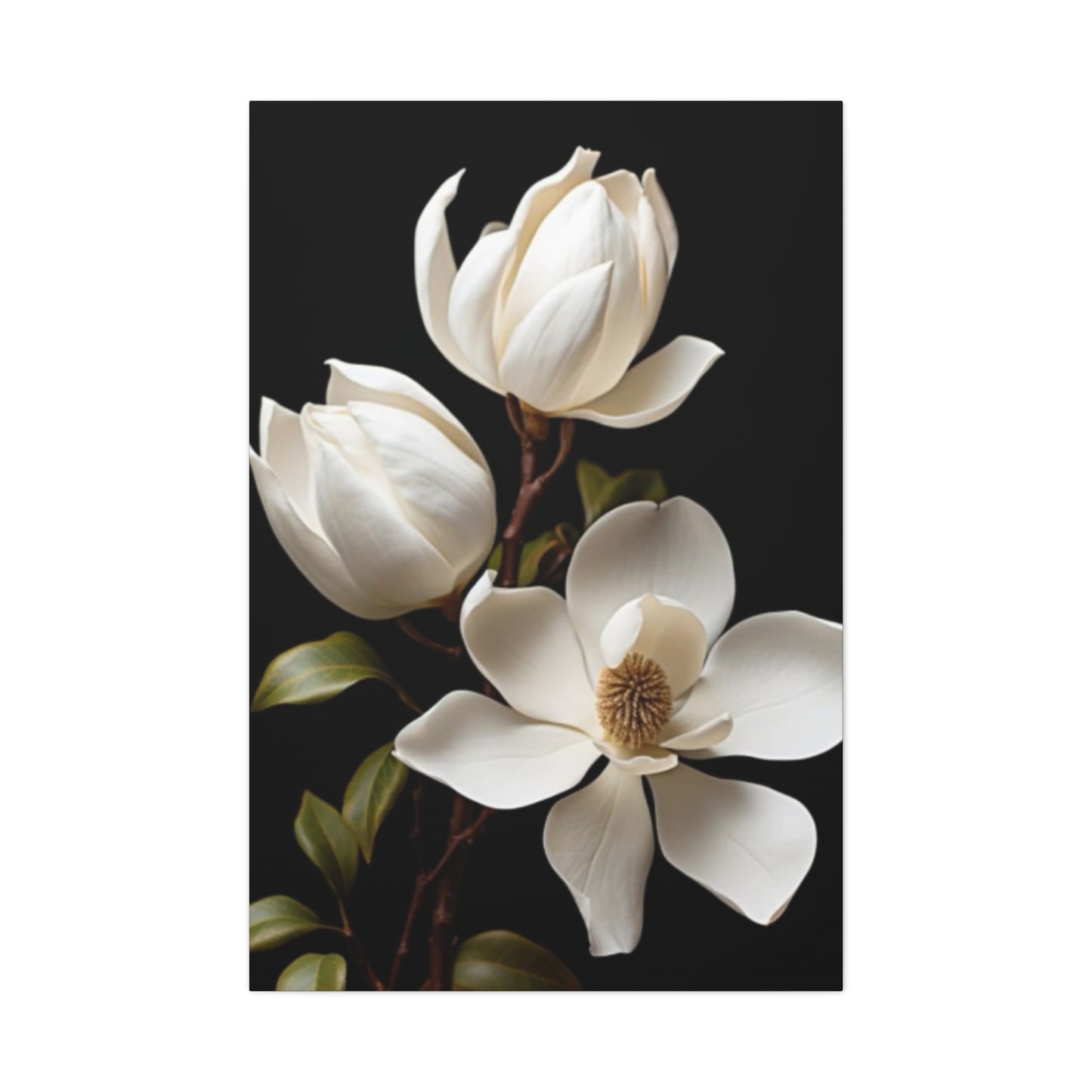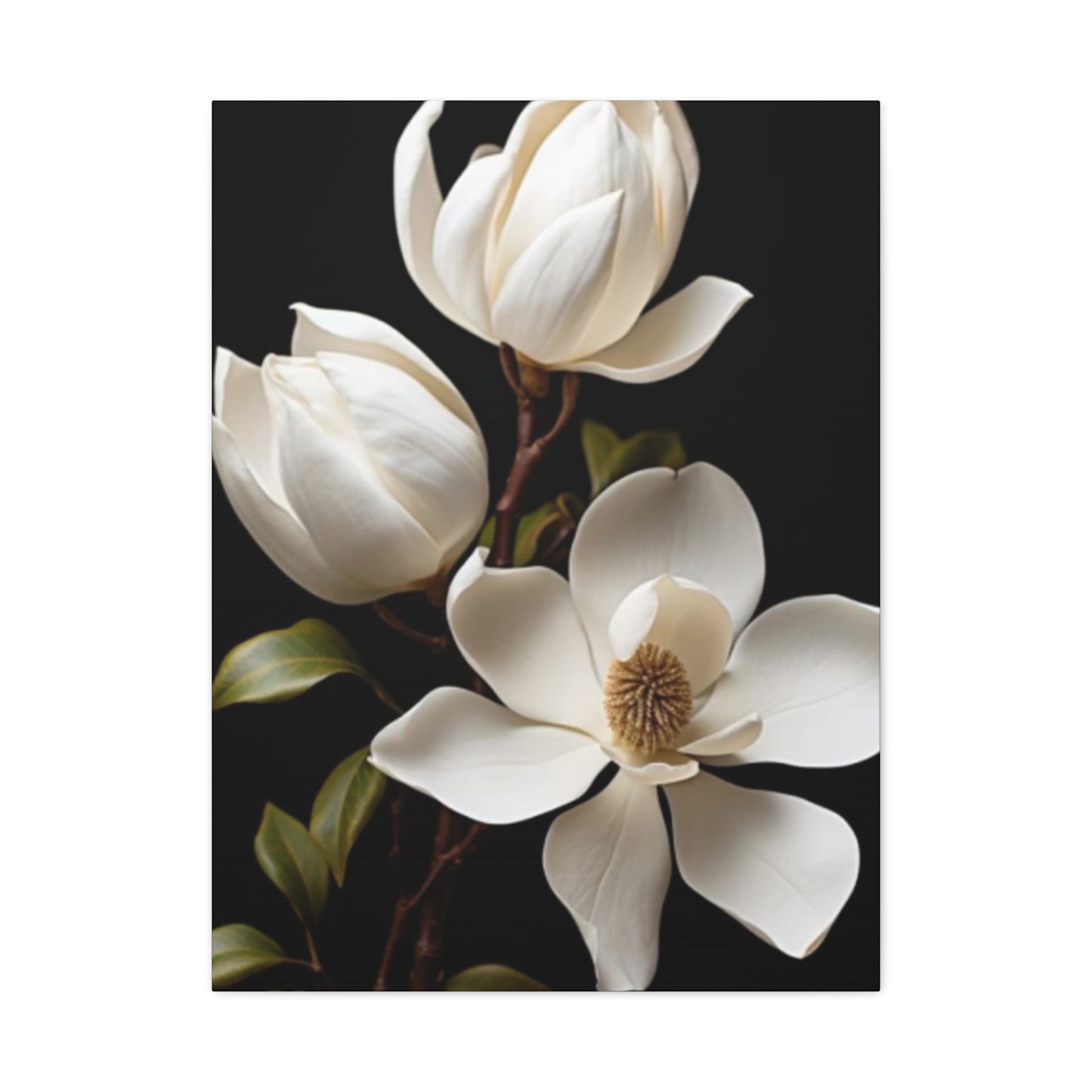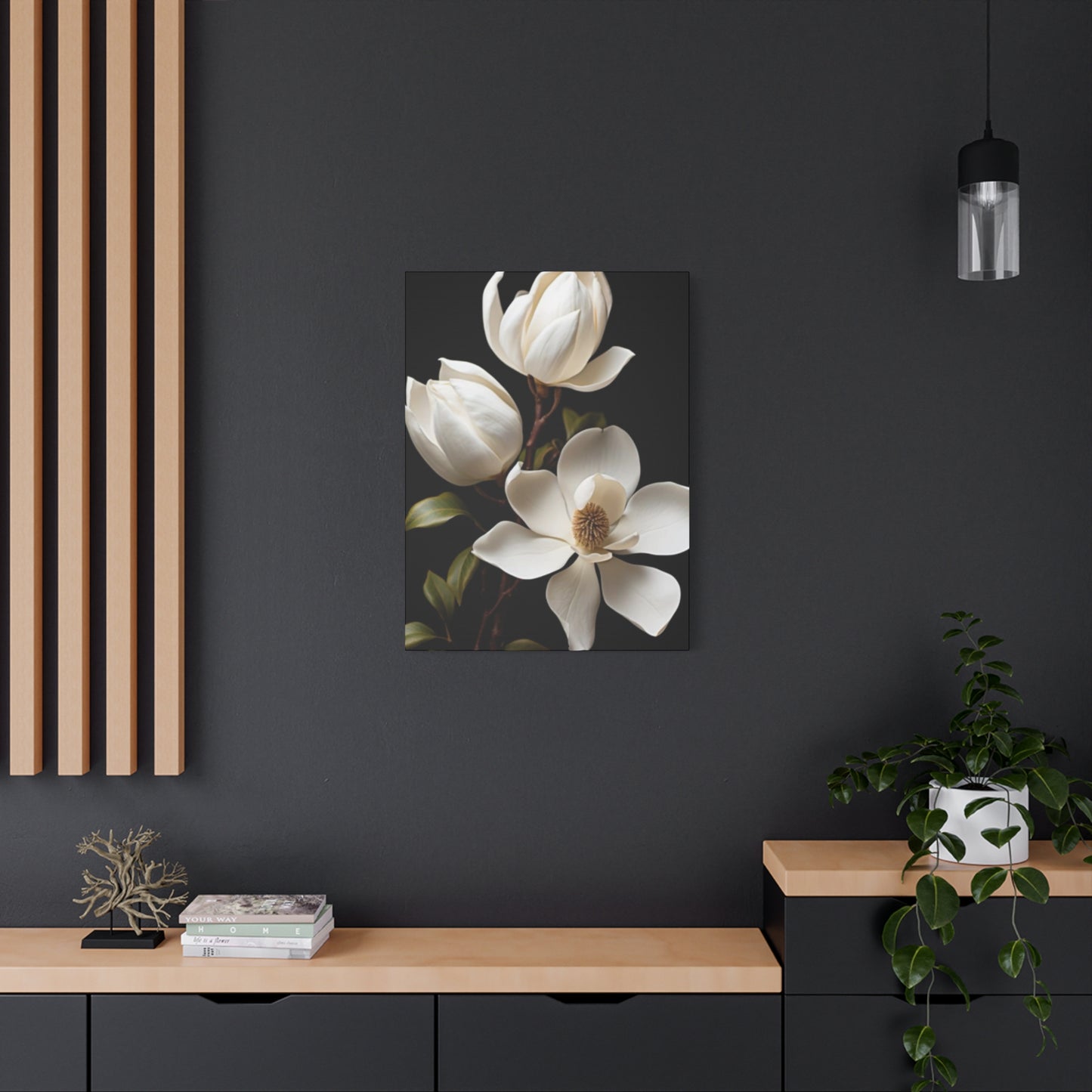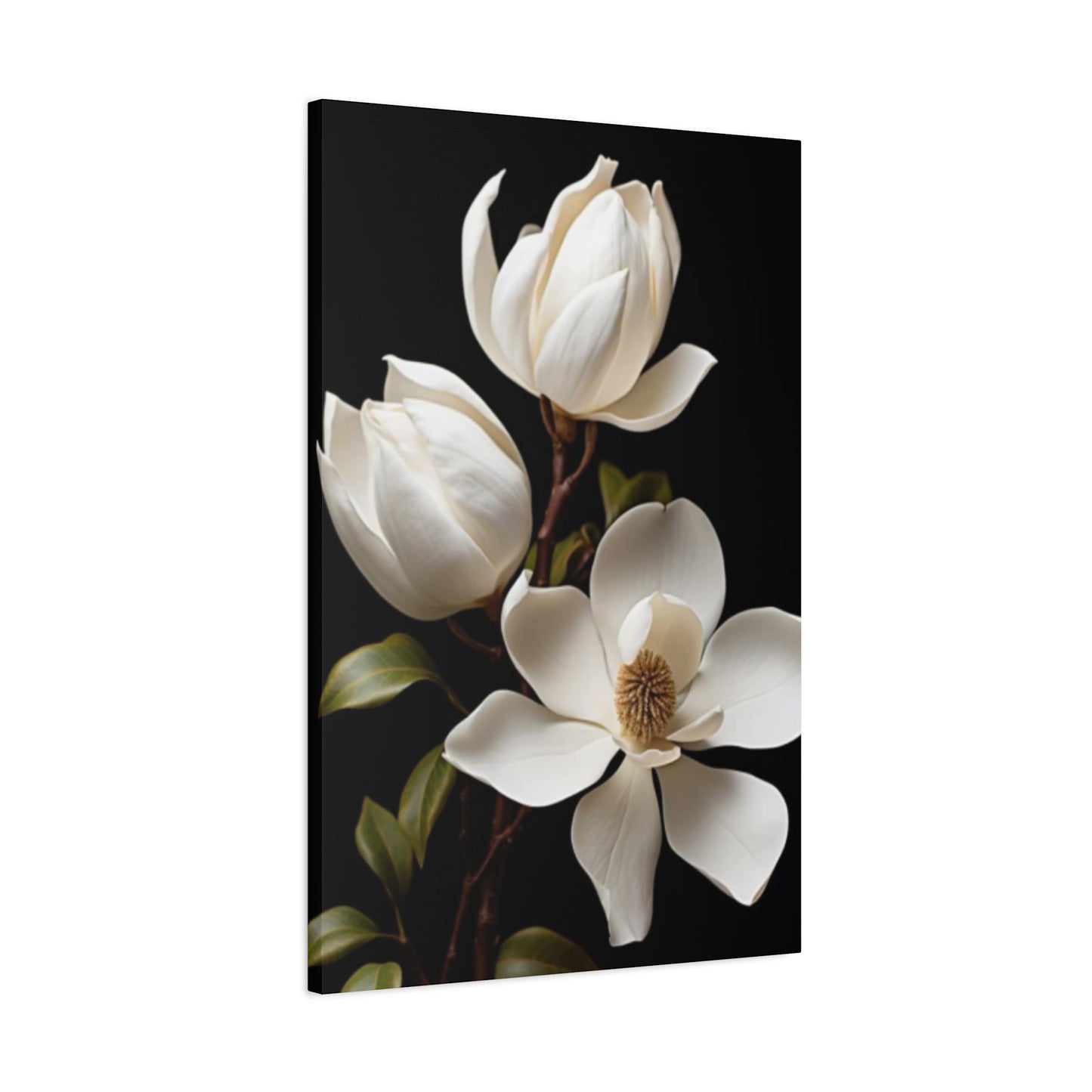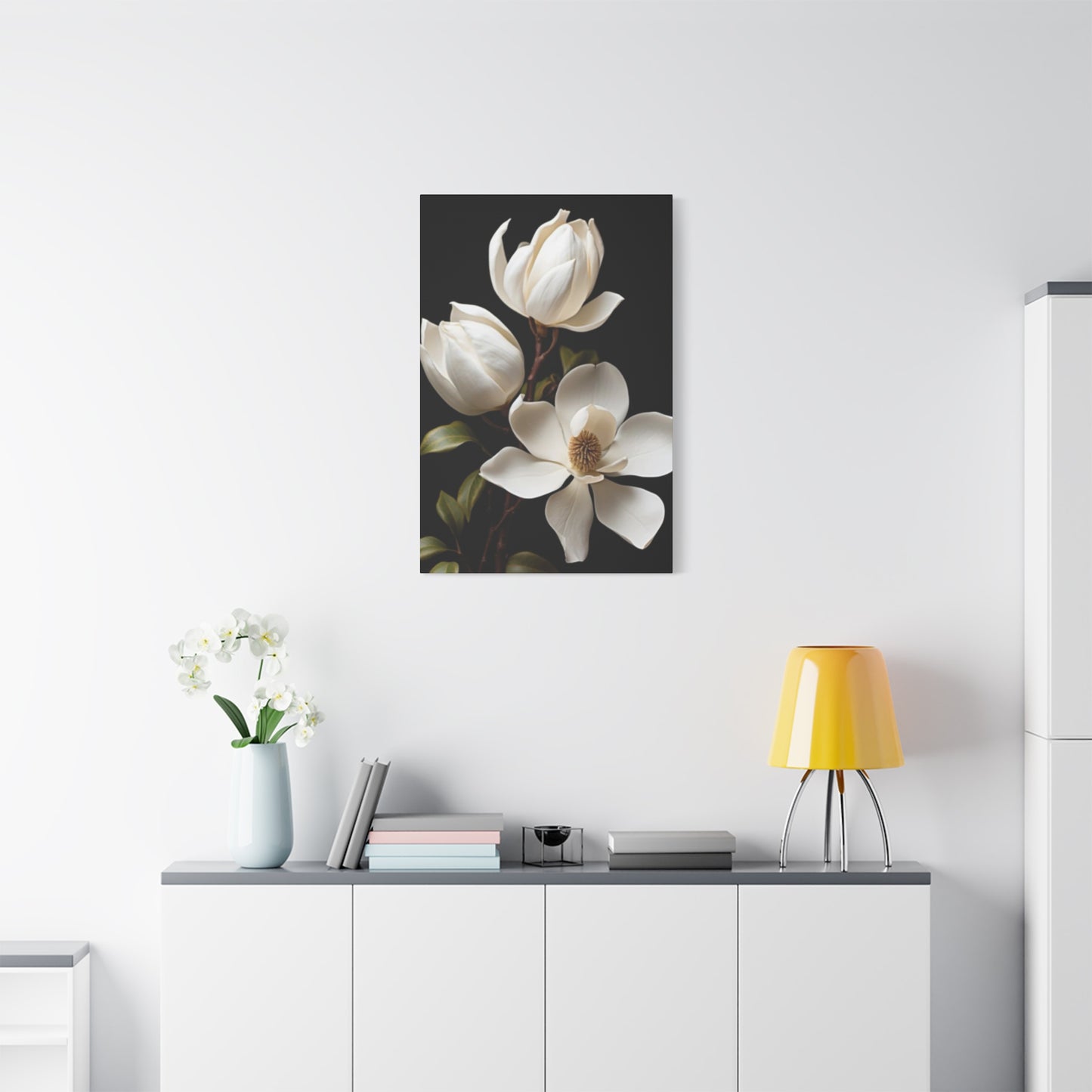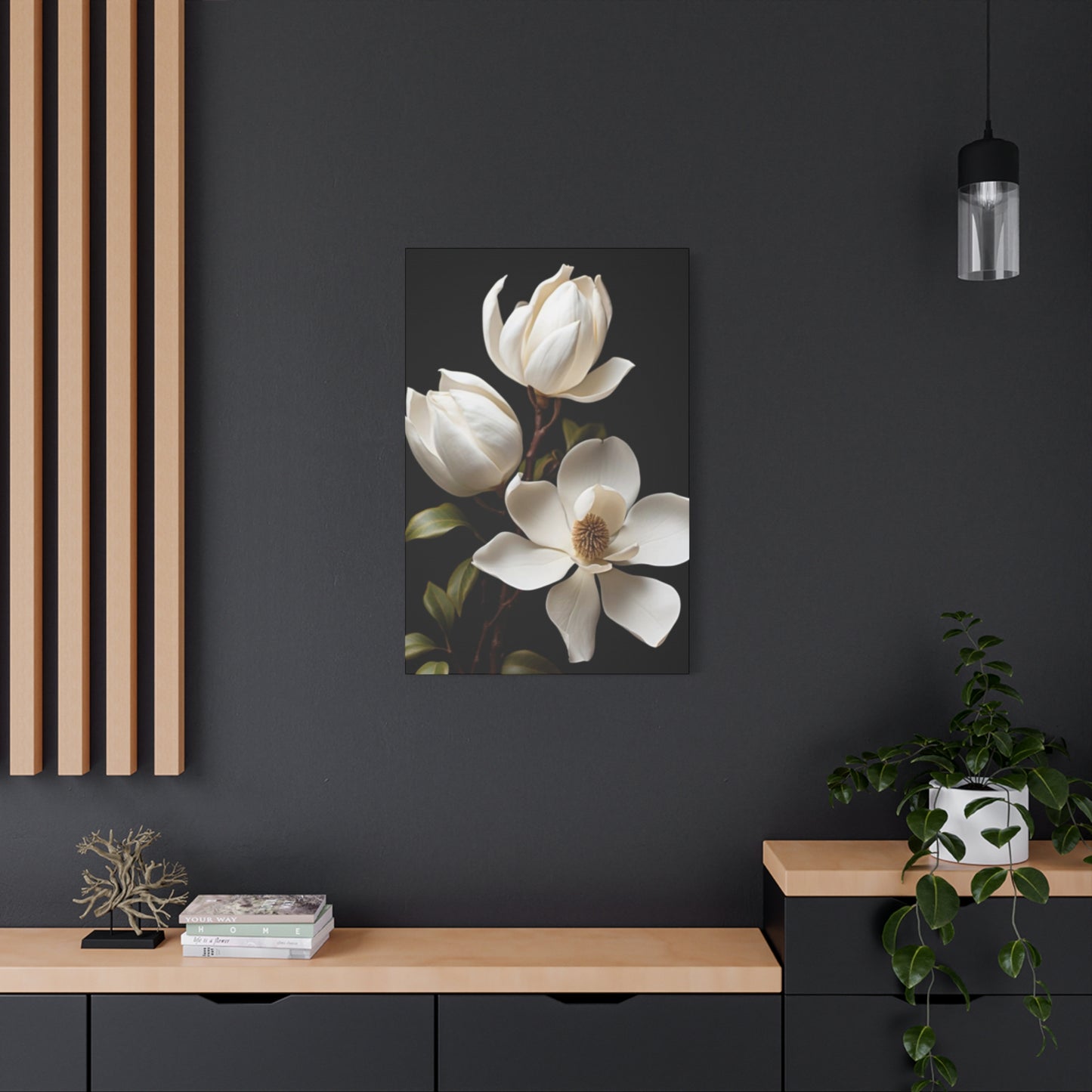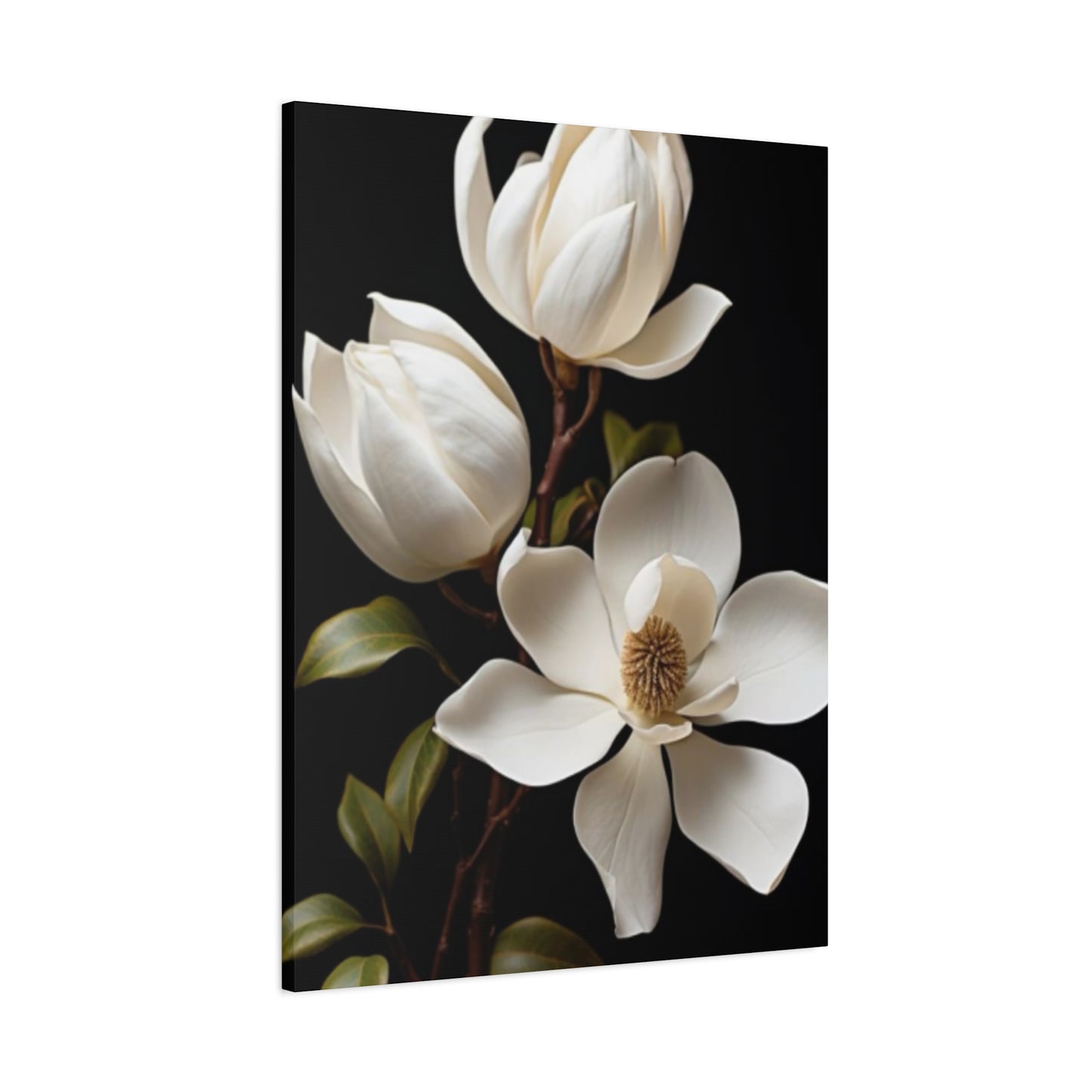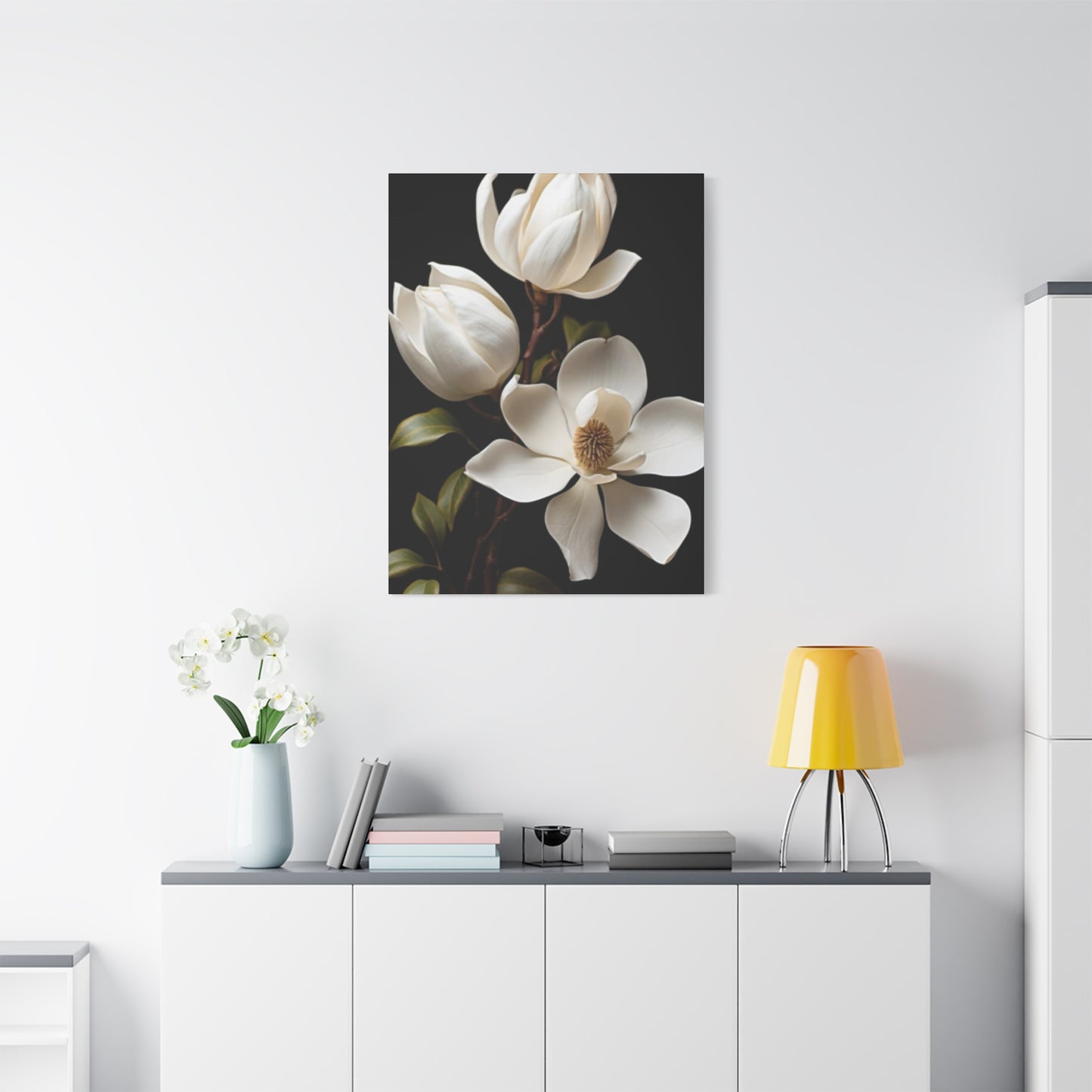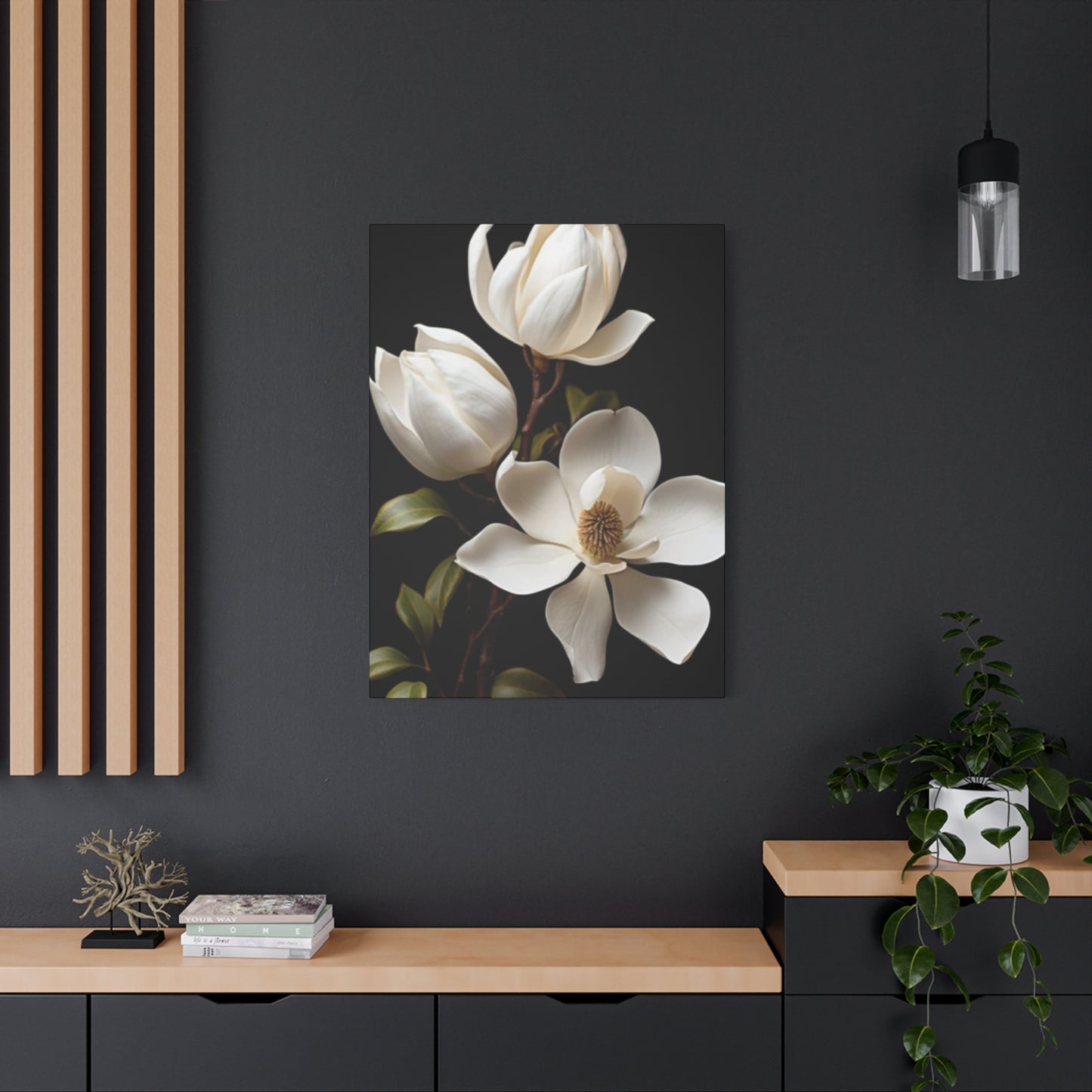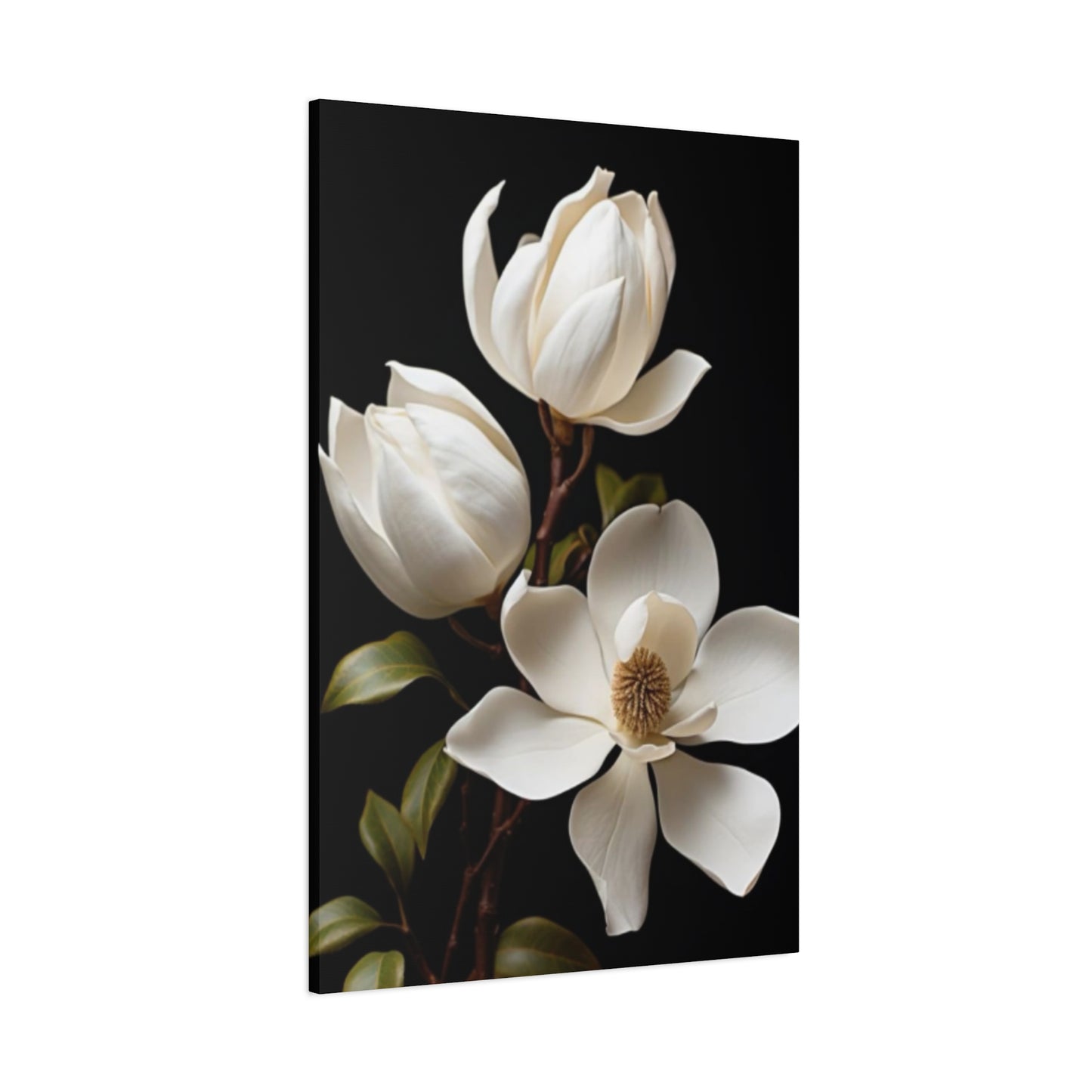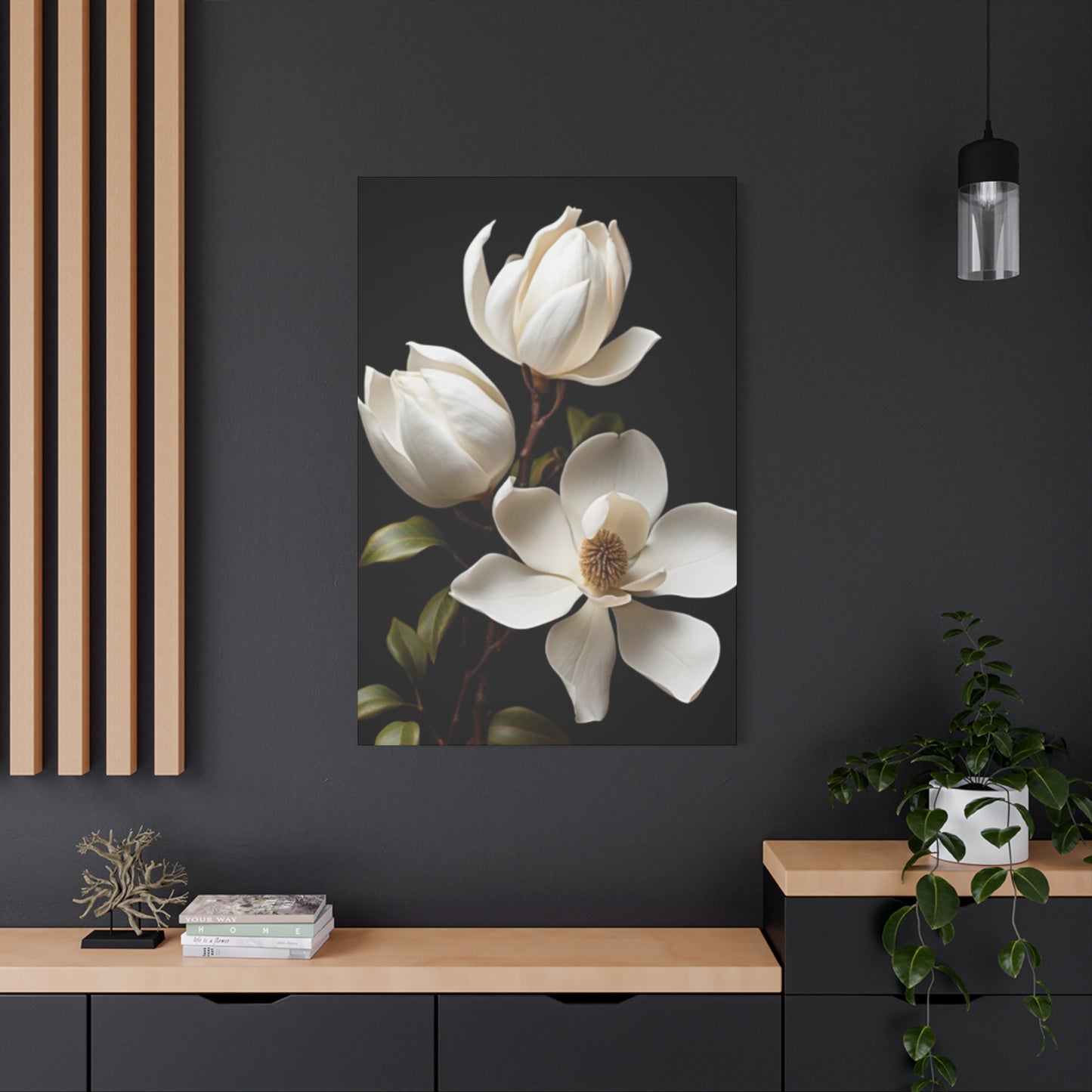Timeless Magnolia Family Painting Wall Art: Infusing Homes with Warmth and Natural Grace
The magnolia flower, with its radiant blossoms and enduring symbolism, has long been associated with purity, dignity, and perseverance. When these blossoms are intertwined with depictions of family bonds in wall art, they create a deeply moving and visually captivating expression of unity, love, and natural grace. Magnolia family paintings bridge the gap between art and emotion, transforming bare walls into reflections of personal stories and shared heritage. This powerful fusion of botanical beauty and human connection adds warmth and authenticity to any home, making each piece not just decoration but a heartfelt tribute to family life.
Magnolia-inspired family paintings bring a unique sense of harmony to interior spaces. The magnolia’s soft petals and graceful curves mirror the tenderness and resilience found within families. Artists often use the flower’s natural symbolism — strength beneath softness — to parallel the nurturing yet enduring nature of familial relationships. Whether portrayed as a family tree surrounded by magnolia blooms or as an abstract blend of figures and floral motifs, these works of art radiate tranquility and belonging. They remind us that just as magnolias flourish season after season, so too do the bonds of family endure through time and change.
In terms of interior design, magnolia family wall art can seamlessly complement a variety of styles. In modern minimalist homes, a simple magnolia silhouette paired with subtle tones can provide a peaceful focal point, evoking calm and balance. In rustic or traditional spaces, richly textured magnolia paintings with earthy frames enhance warmth and timeless charm. The color palette plays a crucial role — whites and creams symbolize purity, while pinks and golds suggest affection and joy. These artworks can be placed in living rooms, dining areas, or hallways — spaces where loved ones gather — to create an atmosphere that feels both inviting and emotionally grounded.
Framing magnolia family art thoughtfully enhances its sentiment and aesthetic appeal. A natural wooden frame can highlight the organic beauty of the flower, while a sleek metallic finish adds modern sophistication. Pairing magnolia family art with complementary décor — such as soft lighting, neutral furniture, or other botanical accents — helps reinforce the feeling of serenity and togetherness.Ultimately, magnolia family painting wall art offers more than beauty; it tells a story of love, continuity, and shared life. By incorporating these meaningful pieces into your home, you create not only an elegant visual statement but also a daily reminder of the enduring bonds that make a house truly feel like home.
Understanding the Symbolic Power of Magnolia Family Art
The magnolia flower carries profound symbolism that resonates deeply with family values. These magnificent blooms represent dignity, perseverance, and enduring beauty, qualities that mirror the strongest family relationships. When incorporated into artwork celebrating family connections, magnolias add layers of meaning that speak to both aesthetic sensibilities and emotional bonds.
Ancient cultures revered the magnolia for its purity and nobility. The flower existed long before bees appeared on Earth, making it one of the oldest flowering plants known to humanity. This prehistoric lineage adds a sense of timelessness to magnolia imagery, suggesting that family bonds, like these resilient flowers, transcend generations and withstand the test of time.
Incorporating magnolia motifs into family-centered artwork creates visual narratives that honor both natural beauty and human connection. The soft petals and graceful form of magnolia blossoms provide a gentle backdrop that never overwhelms representations of family members or symbolic elements representing familial love. Instead, the floral components enhance and elevate the personal significance of the artwork.
Artists who specialize in botanical family portraits understand how to balance detailed floral elements with abstract or realistic representations of family members. The magnolia serves as both subject and supporting element, sometimes framing family silhouettes, other times intertwining with text or symbolic representations of family bonds. This versatility makes magnolia-themed family art adaptable to various design preferences and home decor styles.
The psychological impact of viewing magnolia family artwork extends beyond simple aesthetic appreciation. Studies in environmental psychology suggest that exposure to botanical imagery reduces stress and promotes feelings of wellbeing. When combined with family-oriented themes, this effect multiplies, creating spaces that feel simultaneously calming and emotionally nourishing.
Exploring Floral Family Wall Decor Possibilities
Wall decor featuring floral elements alongside family themes offers endless creative possibilities for personalizing living spaces. The combination addresses both decorative needs and emotional expression, transforming bare walls into meaningful focal points that tell stories about the people who inhabit the space.
Traditional family portraits often feel formal and static, but introducing floral elements softens this formality while adding visual interest. Magnolia blooms can surround family photographs, creating natural frames that draw the eye inward toward the faces of loved ones. Alternatively, stylized floral patterns can form backgrounds against which family names, dates, or meaningful quotes appear, creating layered compositions rich with personal significance.
Contemporary approaches to floral family wall decor often embrace mixed media techniques. Watercolor magnolias might blend with photographic elements, or hand-painted flowers could accent printed text celebrating family milestones. These hybrid approaches appeal to modern sensibilities while maintaining the timeless elegance associated with both magnolia imagery and family commemoration.
The scale of floral family wall decor dramatically affects its impact within a room. Large statement pieces commanding attention above sofas or mantels create bold focal points that set the tone for entire living spaces. These substantial artworks work particularly well in rooms designed for gathering, where their themes of connection and togetherness reinforce the space's purpose.
Smaller floral family pieces offer flexibility for creating gallery walls or intimate vignettes. Multiple coordinated pieces featuring magnolia motifs and family elements can be arranged to tell visual stories, with each component contributing to an overall narrative about family history, growth, or daily life. This modular approach allows for easy updating as families evolve and new memories deserve commemoration.
Color palettes in floral family wall decor significantly influence mood and compatibility with existing interior design. Soft whites and blush pinks associated with magnolia blossoms create serene, romantic atmospheres suitable for bedrooms or formal living areas. Deeper tones incorporating burgundy, navy, or forest green lend sophistication appropriate for studies or dining rooms while maintaining the warmth essential to family-centered artwork.
Capturing Magnolia Love on Canvas
Canvas artwork featuring magnolia themes combined with expressions of family love represents a particularly popular medium for this artistic fusion. The texture and presence of canvas elevates floral family art beyond simple prints, adding tactile dimension that enhances visual impact.
Oil paintings on canvas offer richness and depth impossible to achieve through other mediums. Artists working in oils can build layers of color that give magnolia petals luminous quality, making them appear to glow from within. When these botanical elements combine with scripted family names, significant dates, or symbolic representations of family members, the result becomes heirloom-quality artwork worthy of passing through generations.
Acrylic paintings on canvas provide similar visual impact with different characteristics. The quick-drying nature of acrylics allows for bold, confident brushwork that can capture the graceful curves of magnolia petals with fluid spontaneity. This medium particularly suits contemporary interpretations of magnolia family themes, where stylized abstraction might replace photorealistic representation.
Mixed media canvas work incorporating magnolia family themes offers exciting creative possibilities. Artists might combine painted floral elements with collaged photographs, incorporate textured materials suggesting bark or petals, or add metallic accents that catch light and draw attention to particular compositional elements. These layered approaches create artwork that rewards close examination while maintaining strong visual impact from across the room.
Digital art printed on canvas brings magnolia family themes to wider audiences at accessible price points. Advanced printing technologies reproduce intricate details and subtle color variations with impressive fidelity, making sophisticated floral family artwork available beyond the original art market. Gallery-wrapped canvases ready to hang eliminate barriers to incorporating these meaningful pieces into home environments.
The positioning of magnolia love canvas artwork within living spaces affects both the artwork's impact and the room's overall atmosphere. Hanging such pieces at eye level in areas where families naturally gather ensures maximum visibility and engagement. Placement above seating areas invites contemplation during quiet moments, while positioning near entryways creates welcoming first impressions that immediately communicate family values to visitors.
Lighting considerations significantly affect how magnolia canvas artwork appears in different conditions. Natural light brings out subtle color variations and highlights textured brushwork, making daytime viewing particularly rewarding. Strategic artificial lighting through picture lights or adjustable track lighting extends appreciation into evening hours while adding ambient illumination that enhances room atmosphere.
Designing Family and Flowers Wall Art for Modern Homes
Contemporary interior design increasingly embraces personalized elements that reflect homeowner values and experiences. Wall art combining family themes with floral imagery, particularly magnolia motifs, perfectly addresses this desire for meaningful decoration that balances aesthetic appeal with emotional resonance.
Modern interpretations of family and flowers wall art often favor clean lines and simplified forms over ornate traditional approaches. Minimalist compositions might feature single magnolia blooms paired with essential text elements like family names or establishment dates, creating striking visual statements through restraint rather than elaboration. This approach suits contemporary spaces with neutral color palettes and uncluttered design philosophies.
Geometric frameworks provide interesting structure for family and flowers wall art in modern contexts. Magnolia blossoms might appear within hexagonal frames arranged in honeycomb patterns, or floral elements could alternate with family photographs in grid compositions. These organizational strategies bring contemporary edge to traditional subject matter, appealing to design-conscious families seeking artwork that complements rather than conflicts with modern furnishings.
Typography plays increasingly prominent roles in modern family and flowers wall art. Hand-lettered family mottos or meaningful phrases integrate with magnolia imagery, with careful attention to font selection ensuring visual harmony. Script fonts echo the organic curves of flower petals, while architectural sans-serif typefaces provide crisp contrast that emphasizes both text and botanical elements.
Color blocking techniques borrowed from abstract art inject contemporary energy into family and flowers wall art. Rather than naturalistically rendered magnolia blossoms, artists might interpret flowers through bold geometric shapes in coordinated color palettes. These stylized approaches retain recognizable magnolia characteristics while embracing modern artistic vocabulary that resonates with current design trends.
Scandinavian-inspired approaches to family and flowers wall art emphasize simplicity, functionality, and connection to nature. Pale wood frames contain delicate line drawings of magnolia branches accompanied by minimalist text celebrating family. The resulting pieces feel light and airy, contributing to hygge-focused interiors designed to promote comfort and togetherness.
Bohemian interpretations of magnolia family wall art embrace layering, texture, and eclectic mixing of elements. Watercolor flowers in jewel tones might overlay vintage-inspired typography, or pressed botanical specimens could combine with family photographs in collaged compositions. These maximalist approaches celebrate abundance and individuality, creating visually rich focal points bursting with personality.
Creating Magnolia Moments at Home Through Thoughtful Decor
Home environments shape daily experiences and influence family dynamics in subtle but significant ways. Thoughtfully selected decor featuring magnolia themes can create moments of beauty and connection that enrich ordinary routines and strengthen family bonds.
Morning light filtering through windows to illuminate magnolia artwork transforms routine breakfast gatherings into opportunities for aesthetic appreciation. Positioning floral family pieces where early sun reaches them ensures these artworks become part of morning rituals, offering visual reminders of what matters most as families prepare for their days.
Evening relaxation takes on added dimension when magnolia-themed family artwork provides focal points for unwinding spaces. After busy days, returning to environments featuring serene botanical imagery combined with family symbolism creates transitions between public and private selves. These artworks signal that home spaces prioritize relationships and beauty over productivity and striving.
Seasonal decorating opportunities expand when magnolia family artwork serves as year-round foundation pieces. The flowers' association with spring renewal makes them natural complements to lighter seasonal decor, while their elegant form translates well to autumn and winter arrangements. By maintaining consistent magnolia themes throughout the year, families create visual continuity that anchors changing decorative elements.
Magnolia artwork positioned in transitional spaces like hallways or staircases transforms functional areas into meaningful passages. Family members moving through these spaces multiple times daily engage repeatedly with imagery celebrating their connections, reinforcing family identity through accumulated small moments of visual contact. Over time, these repeated exposures build deep associations between home environments and family values.
Designated family gathering spaces gain enhanced purpose when magnolia-themed artwork visually reinforces their intended function. Game rooms, media rooms, or reading nooks decorated with floral family pieces feel intentionally designed for togetherness rather than accidentally occupied. This purposeful decoration communicates that family time deserves considered attention and beautiful surroundings.
Private spaces like bedrooms benefit from magnolia family artwork that celebrates specific relationships. Parents might display pieces commemorating their partnership and children, while children's rooms could feature age-appropriate floral artwork incorporating their names or birth flowers. These personalized touches make individual spaces feel specially created for their occupants while maintaining connection to larger family themes through shared magnolia motifs.
Understanding Petals and People Painting as an Art Form
The artistic fusion of botanical elements and human subjects represents a rich tradition with contemporary relevance. Paintings that interweave flower petals with representations of people create layered meanings that speak to our simultaneous existence as individuals and members of larger natural and social systems.
Historical precedents for combining floral and human elements in artwork stretch back centuries. Renaissance masters incorporated flowers as symbolic elements in portraits, with specific blooms conveying messages about subjects' virtues or social positions. Victorian artists elevated flower painting to high art while simultaneously codifying elaborate language of flowers that allowed botanical imagery to communicate complex emotional and social messages.
Contemporary artists working with petals and people themes often reference this historical depth while bringing fresh perspectives shaped by modern concerns. Environmental consciousness influences artwork that positions humans within rather than above natural systems, with magnolia petals and human forms blending in ways that question boundaries between self and environment. These philosophical explorations manifest as beautiful artwork accessible to viewers regardless of their engagement with underlying concepts.
Technical challenges in petals and people painting require artists to balance competing demands of botanical accuracy and meaningful human representation. Magnolia petals demand careful observation to capture their distinctive form and subtle color variations, while human elements require different skill sets whether rendered realistically or symbolically. Successful artwork navigates these different representational modes seamlessly, creating unified compositions despite diverse source material.
Emotional resonance distinguishes compelling petals and people paintings from merely decorative floral artwork. The most powerful pieces evoke specific feelings about human connection, mortality, beauty, or belonging. Magnolia blossoms surrounding family silhouettes might communicate protection and nurturing, while individual figures emerging from or dissolving into flower petals could express transformation or impermanence. These emotional layers give artwork staying power that purely decorative pieces lack.
Scale relationships between floral and human elements significantly impact compositional meaning in petals and people paintings. Oversized magnolia blooms dwarfing human figures suggest nature's power and humanity's relative smallness within larger ecological systems. Conversely, prominent human forms with delicate background flowers position people as primary subjects, with botanical elements serving supporting decorative roles. Artists manipulate these scale relationships to direct viewer attention and influence interpretation.
Color harmonies unite petals and people within cohesive visual statements. Skin tones might echo petal colors, suggesting organic connections between human and botanical subjects. Alternatively, strong color contrasts between figures and flowers create visual tension that energizes compositions and emphasizes distinctions between different orders of existence. These chromatic choices fundamentally shape artwork's mood and conceptual implications.
Celebrating Together with Magnolia Themed Artwork
Magnolia imagery naturally lends itself to themes of togetherness, making these elegant flowers ideal subjects for artwork celebrating family bonds and shared experiences. The flower's cup-shaped blooms suggest gathering and containing, visual metaphors for how families hold and protect their members.
Seasonal celebrations gain enhanced significance when magnolia artwork serves as backdrop for family gatherings. Holiday meals enjoyed in dining rooms featuring floral family art connect temporary celebrations to permanent family values represented in the artwork. These visual anchors help create family traditions by providing consistent elements across years of changing circumstances and growing families.
Milestone commemorations deserve special documentation, and magnolia-themed artwork offers beautiful ways to mark significant family moments. Anniversary dates incorporated into floral compositions become permanent reminders of commitments renewed, while artwork celebrating children's births or adoptions gives these transformative events tangible form that grows more meaningful over time.
Daily togetherness sometimes needs intentional cultivation in busy modern lives. Magnolia family artwork positioned in gathering spaces serves as gentle reminder that being together matters more than accomplishing individual tasks. These visual cues encourage family members to pause, connect, and appreciate ordinary moments that comprise the majority of shared family life.
Photographic opportunities multiply around magnolia family artwork, which provides beautiful backdrops for casual family pictures documenting everyday life. Over years, accumulated photos showing family members at different ages positioned before the same floral artwork create touching visual records of growth and change. The unchanging artwork emphasizes how much family members transform while their core connections remain constant.
Storytelling traditions develop around significant family artwork. Children growing up with magnolia family pieces in their homes naturally ask questions about the artwork's origins, meanings, and connections to family history. These conversations become vehicles for transmitting family values and stories, with the artwork serving as conversation starter and visual reference point.
Gift-giving takes on special significance when magnolia family artwork changes hands. Parents presenting grown children with pieces that hung in childhood homes create tangible links between past and present. Siblings exchanging coordinating floral family pieces establish visual connections between separate households, maintaining family bonds despite physical distance.
Discovering Magnolia Inspired Family Art Across Cultures
While magnolias hold particular significance in certain cultural traditions, the universal appeal of flowers and family creates cross-cultural resonances that make magnolia family art broadly meaningful. Examining how different traditions incorporate floral family themes reveals both unique perspectives and shared human values.
Southern United States culture particularly embraces magnolia symbolism, with these flowers representing hospitality, dignity, and traditional values. Magnolia family artwork from this regional tradition often incorporates elements like plantation architecture, Spanish moss, or references to multigenerational rootedness in specific places. These cultural markers create artwork deeply meaningful to families with Southern heritage while offering exotic appeal to those from other regions.
Asian artistic traditions bring different perspectives to magnolia family themes. Chinese and Japanese art history includes extensive magnolia representation, with these flowers symbolizing purity, nobility, and feminine beauty. Contemporary Asian-influenced magnolia family art might incorporate ink-wash painting techniques, calligraphy elements, or compositional principles from traditional scroll painting. These cross-cultural artistic fusions create fresh approaches to familiar subject matter.
European decorative traditions contribute their own influences to magnolia family artwork. Victorian sentimentality around flowers and family created elaborate visual languages that contemporary artists reference and reinterpret. Arts and Crafts movement emphasis on handcrafted beauty and natural motifs aligns perfectly with magnolia family art values, producing pieces characterized by simplified forms and honest materials.
Latin American folk art traditions offer vibrant approaches to floral family themes. Bold colors, naive painting styles, and celebratory tones characterize many Latin-influenced interpretations of magnolia family subjects. These pieces often incorporate multiple family members, extended kin networks, and religious elements reflecting cultural values around familia and community.
Indigenous artistic perspectives bring unique worldviews to nature-based family art. Many Native traditions view humans as integrated within rather than separate from natural systems, an outlook that produces magnolia family artwork emphasizing interconnection and reciprocity between people and plants. These pieces often avoid Western artistic conventions around representation, using symbolic systems rooted in specific tribal traditions.
Contemporary global fusion creates exciting hybrid approaches to magnolia family art. Artists drawing inspiration from multiple cultural traditions produce works that feel simultaneously familiar and fresh. A single piece might combine Asian composition, European color sensibilities, and Latin American exuberance, resulting in artwork reflecting our increasingly interconnected world while maintaining meaningful content about universal human experiences of family and belonging.
Understanding cultural contexts enriches appreciation for magnolia family artwork while preventing appropriation concerns. Viewers and collectors who educate themselves about the traditions informing specific pieces engage more deeply with the artwork while respecting its cultural sources. This mindful approach to cross-cultural artistic exchange benefits everyone involved in creating and appreciating magnolia family art.
Integrating Home with Magnolia Art Seamlessly
Successfully incorporating magnolia artwork into home environments requires more than simply hanging pieces on walls. Thoughtful integration considers how artwork relates to existing decor, architectural features, furniture arrangements, and the daily rhythms of household life.
Color coordination between magnolia artwork and room palettes determines whether pieces feel harmoniously integrated or jarring additions. Pulling accent colors from the artwork into textiles, accessories, or wall treatments creates visual connections that make the art feel intentional rather than afterthought. Even small touches like throw pillows echoing flower colors establish these important links.
Furniture arrangement affects artwork visibility and impact. Seating positioned to face magnolia family pieces ensures they receive attention rather than existing as background elements. Conversely, placing artwork behind seating areas means only visitors see the pieces, potentially signaling that the art serves more decorative than personal purposes for the family.
Architectural features offer opportunities for enhanced artwork presentation. Alcoves, recessed walls, or chimney breasts provide natural locations for feature pieces, while crown molding, wainscoting, or other decorative elements can frame artwork without additional matting or framing. Working with rather than against architectural features produces sophisticated results that appear professionally designed.
Layering techniques borrowed from interior styling elevate magnolia artwork from isolated pieces to components of larger decorative compositions. Leaning framed art on mantels or shelves alongside complementary objects creates curated vignettes with depth and interest. Overlapping frames in gallery wall arrangements produces dynamic visual movement that single pieces cannot achieve.
Negative space plays crucial roles in successful artwork integration. Surrounding magnolia family pieces with adequate blank wall area allows them to breathe and prevents visual crowding. The minimalist maxim that less is more applies particularly to artwork display, where thoughtful restraint often creates stronger impact than filling every available wall surface.
Seasonal rotation keeps magnolia artwork feeling fresh while allowing families to enjoy larger collections than simultaneous display would permit. Storing some pieces during certain seasons and rotating them into view at other times prevents artwork fatigue while providing variety. This practice particularly suits families with extensive collections who want to honor many pieces without creating cluttered environments.
Lighting represents perhaps the single most impactful element in artwork integration. Properly lit magnolia family pieces reveal colors, textures, and details that inadequate illumination obscures. Combining natural and artificial light sources at different times of day ensures artwork always appears its best regardless of external lighting conditions.
Exploring Family Roots and Magnolia Blooms as Linked Concepts
The metaphorical connections between family roots and magnolia blooms offer rich symbolic territory for artistic exploration. Both concepts speak to origins, growth, beauty, and the life cycles that shape all living things, making their combination particularly resonant in artwork celebrating family.
Magnolia trees develop extensive root systems that anchor them through decades or even centuries of growth. These hidden underground structures parallel family roots, the ancestral connections and cultural inheritances that ground individuals within larger intergenerational networks. Artwork depicting both visible blooms and suggested roots acknowledges that family beauty emerges from deep, sustaining connections to the past.
Genealogical interest drives many families to explore their roots, and magnolia family artwork can incorporate these discoveries. Family trees with botanical motifs replace abstract relationship charts, with magnolia branches bearing names of ancestors in place of leaves or flowers. These artistic family trees function as both decoration and documentation, making genealogical information accessible and beautiful.
Migration stories find expression in magnolia family artwork that depicts roots in one location and blooms in another. Families who have moved far from ancestral homes might commission or select pieces showing magnolia roots in homeland soil with branches extending toward new locations. These visual narratives honor origins while celebrating successful adaptation and growth in new environments.
Adoption creates family connections unrelated to biological roots, relationships that magnolia imagery can beautifully represent. Grafting, the horticultural practice of joining plant parts to grow as one organism, provides powerful metaphor for adoptive family formation. Artwork depicting grafted magnolia branches bearing blooms in different colors or forms visually expresses how diverse origins unite into single thriving families.
Multicultural families with roots in different traditions find magnolia artwork useful for expressing complex identities. Pieces might incorporate varied artistic styles representing different cultural heritages, unified through shared magnolia imagery. These artworks celebrate diversity within family while asserting cohesive family identity transcending individual cultural backgrounds.
Generational wisdom transmission mirrors how magnolia trees develop from seeds into mature plants capable of producing their own seeds. Artwork depicting magnolia life cycles alongside family members of different ages suggests how each generation draws from previous ones while preparing to support future generations. These pieces honor continuity and change, permanence and transformation.
Conservation themes emerge when considering how carefully tended magnolia trees pass through multiple family generations. Artworks depicting specific magnolia trees with known histories parallel family heirlooms and ancestral homes as tangible connections to the past. These pieces might commemorate trees planted to mark births, marriages, or deaths, linking individual and family history to specific living plants.
Selecting Magnolia Wall Art for Families with Intention
Choosing artwork for family spaces represents significant decisions that affect daily experiences for years or even decades. Selecting magnolia wall art specifically for family contexts requires balancing aesthetic preferences, symbolic meanings, practical considerations, and budget realities.
Personal style preferences vary widely even within families, making collaborative selection processes important for shared spaces. Discussing what different family members value in artwork ensures chosen pieces resonate with everyone who will see them regularly. These conversations themselves strengthen family bonds by revealing values and preferences that might otherwise remain unexpressed.
Original artwork versus reproduction represents one fundamental decision point. Original pieces carry unique energy and investment value that reproductions cannot match, but their higher costs place them beyond many family budgets. High-quality reproductions make sophisticated magnolia family art accessible while freeing financial resources for other family priorities. Neither choice is inherently superior; the right decision depends on individual family circumstances and values.
Medium considerations affect both aesthetic qualities and practical concerns like durability and maintenance. Canvas prints offer texture and presence, framed paper prints suit traditional decor, metal prints provide contemporary edge with exceptional durability, and wood-mounted prints bring organic warmth. Each medium has distinct characteristics that may align better or worse with specific rooms and design visions.
Size decisions dramatically impact artwork's presence and effectiveness within rooms. Undersized pieces disappear on large walls, while oversized artwork overwhelms small spaces. Measuring walls and creating paper templates sized to potential purchases prevents costly mistakes and ensures selected pieces achieve desired visual impact.
Frame selection rivals the artwork itself in importance for overall effect. Frames should complement both the artwork and surrounding decor without overwhelming the central image. Simple frames suit minimalist spaces and keep focus on the artwork, while ornate frames enhance traditional settings and add luxury. Considering frames as integral to artwork rather than afterthought produces more cohesive results.
Budget realities constrain most families, but creative approaches stretch available resources. Prioritizing one statement piece for the main gathering space may serve families better than multiple smaller pieces spread throughout the home. Alternatively, building collections gradually over time allows families to invest in quality pieces as budgets permit rather than settling for less satisfactory options to fill spaces immediately.
Artist research enhances both purchasing confidence and artwork appreciation. Learning about artists whose work appeals helps families make informed decisions while deepening engagement with the pieces they ultimately choose. Supporting living artists creates additional satisfaction through knowledge that purchases directly support creative work.
Designing Family Room Magnolia Art that Functions Daily
Family rooms serve multiple purposes in modern homes, functioning as entertainment centers, casual dining areas, homework spaces, and general gathering zones. Magnolia artwork for these hardworking rooms must withstand high traffic while contributing to welcoming atmospheres that accommodate diverse activities.
Durability considerations matter more in family rooms than in formal spaces. Artwork vulnerable to damage from flying toys, spilled drinks, or energetic children creates stress rather than enjoyment. Choosing pieces with protective glazing, durable materials, and forgiving finishes ensures magnolia family art survives daily life's inevitable accidents.
Versatility allows family room artwork to complement different activities and configurations. Pieces with fairly neutral color palettes avoid clashing with changing textile choices as furniture ages and replacements arrive. Imagery that reads clearly from various distances remains visible whether viewers sit close by or watch from across the room during gatherings.
Scale appropriate to family room dimensions prevents artwork from disappearing in these often large, open spaces. Family rooms can accommodate and benefit from substantial pieces that might overwhelm bedrooms or studies. These larger formats create strong focal points that anchor furniture arrangements and provide visual interest on walls that might otherwise feel empty.
Multiple smaller pieces arranged in gallery walls offer advantages over single large artworks in some family rooms. Collections of coordinated magnolia family pieces at varied sizes create visual interest while allowing flexibility. Individual components can be rearranged, additions made over time, and configurations adjusted as families grow and needs change.
Positioning artwork in family rooms requires considering viewing angles from various seating areas and activity zones. Pieces placed where they're visible from the main sofa naturally receive more attention than those hung outside typical sightlines. Ensuring magnolia family artwork remains visible during primary room uses maximizes its impact on daily family life.
Child involvement in selecting family room artwork teaches valuable lessons about aesthetic decision-making while ensuring pieces resonate with younger family members. Even young children can participate in conversations about which magnolia styles appeal to them and what feelings different artworks evoke. This participation increases their connection to final selections and teaches that their preferences matter in family decisions.
Thematic consistency between family room artwork and the space's primary functions creates coherence. Magnolia pieces emphasizing togetherness, play, or casual comfort align naturally with family room purposes, while imagery suggesting formal occasions or quiet contemplation might feel mismatched. Selecting artwork that reinforces rather than contradicts room function produces more satisfying results.
Appreciating Magnolia Blossom Family Print Options
Printed magnolia family artwork brings professional artistic vision to homes at accessible price points, democratizing access to beautiful, meaningful wall art. Understanding available printing methods, materials, and quality indicators helps families select prints that meet their standards while staying within budget.
Giclée printing represents the highest quality in fine art reproduction, using archival inks and premium papers to create prints nearly indistinguishable from original artwork. Museums and galleries use giclée methods for their reproduction needs, and families seeking heirloom-quality magnolia prints should prioritize this printing method despite its higher cost.
Standard digital printing serves well for budget-conscious families willing to accept shorter lifespan and potentially less color accuracy. Modern digital printers produce impressive results suitable for most home applications, particularly when prints will hang in spaces without direct sunlight exposure. These prints cost significantly less than giclée alternatives while still offering appealing magnolia family imagery.
Canvas transfer printing creates texture and presence impossible with paper prints. The printing process transfers designs onto prepared canvas surfaces, producing pieces that mimic hand-painted artwork from across rooms. Stretched over wooden frames and ready to hang, canvas prints eliminate matting and framing costs while providing substantial visual impact.
Metal prints offer contemporary aesthetic with exceptional durability. The printing process infuses dyes directly into specially coated aluminum sheets, creating luminous images resistant to moisture, UV damage, and physical wear. These prints suit modern interiors and high-traffic areas where traditional prints might deteriorate quickly.
Wood-mounted prints bring organic warmth that particularly suits magnolia family themes. Images printed on or mounted to natural wood surfaces incorporate wood grain into the artwork, creating unique pieces with rustic appeal. These prints complement farmhouse, cottage, and nature-inspired decor styles while providing durability superior to paper prints.
Framing significantly affects printed artwork's appearance and longevity. While many prints arrive ready to hang, others require framing decisions. Pre-framed options eliminate this burden but limit customization, while purchasing prints separately from frames allows perfect matching to individual preferences and existing decor.
Limited edition prints occupy middle ground between original artwork and unlimited reproductions. Artists release fixed numbers of signed prints, then destroy the digital files or plates used to create them, ensuring rarity. Families seeking investment potential or supporting favorite artists might prioritize limited editions despite their higher costs.
Understanding How Love Grows Like Magnolias Through Art
The comparison between magnolia growth and developing love offers poetic territory that artists explore through various visual strategies. These artworks translate botanical processes into metaphors for relationship development, creating pieces that resonate emotionally while remaining visually appealing.
Magnolia trees grow slowly but live for decades or centuries, mirroring how enduring love develops gradually through accumulated experiences. Artwork depicting magnolia trees at different life stages parallels family photographs spanning years, showing how both plants and relationships mature through patient tending and favorable conditions.
Magnolia flowers emerge from seemingly dead winter branches, their sudden bloom representing how love revives spirits and brings beauty to difficult times. Artwork capturing this dramatic transformation speaks to love's power to create hope and renewal even during challenging family circumstances. These pieces offer comfort during hard times while celebrating resilience.
The magnolia's cup-shaped flowers seem designed to hold precious things, much as love creates space for vulnerability and trust. Artistic representations of magnolia blooms cradling symbolic elements like hearts, family names, or other meaningful objects visually express how love protects what matters most.
Magnolia petals fall gracefully, carpeting ground beneath trees with delicate beauty before decomposing to nourish new growth. This natural cycle parallels how small daily acts of love accumulate into strong relationships, and how each generation's love nourishes future ones. Artwork depicting falling or fallen petals alongside growing trees captures this intergenerational transmission of love.
The magnolia's ancient lineage suggests that love, like these prehistoric flowers, represents fundamental life force predating human civilization. Artwork emphasizing magnolias' evolutionary age positions human love within larger natural patterns, connecting individual family experiences to universal biological imperatives toward connection and reproduction.
Magnolia flowers attract specific pollinators that ensure seed production and species continuation. This biological interdependence mirrors how families depend on each other for emotional sustenance and life satisfaction. Artwork incorporating pollinators alongside magnolia blooms can represent family members' different roles in maintaining household health and happiness.
The variation among magnolia species and cultivars reflects how each family's love manifests uniquely despite universal underlying patterns. Artists might depict different magnolia varieties to represent diverse family structures, cultural backgrounds, or relationship styles, celebrating particularity while acknowledging commonality.
Creating Soft Florals with Strong Bonds in Visual Art
The juxtaposition of delicate floral imagery with themes of powerful emotional bonds creates productive artistic tension that skilled artists exploit for maximum impact. Magnolia family artwork succeeding at this balance achieves something special, looking gentle while communicating strength.
Watercolor techniques particularly suit artwork balancing soft florals with strong themes. The medium's inherent delicacy and transparency create ethereal magnolia blossoms that appear to float on surfaces. Yet these same flowers can frame bold typography declaring family commitments or surround photographs capturing life's intensity, creating contrast that emphasizes both elements.
Pastel palettes contribute to soft aesthetic while remaining compatible with serious family themes. Blush pinks, soft creams, pale grays, and muted greens create soothing color environments that prevent artwork from feeling harsh or demanding. These gentle hues work particularly well in bedrooms and nurseries where calm atmospheres support rest and intimacy.
Detailed botanical illustration brings scientific precision to floral elements while maintaining delicacy. The careful observation required for accurate magnolia rendering produces images rich with subtle detail that rewards close viewing. When combined with simpler design elements representing family, these detailed flowers provide visual complexity that prevents artwork from reading as simplistic.
Strong compositional structure prevents soft floral imagery from becoming insipid or overly sweet. Clear focal points, deliberate negative space, and confident design choices give backbone to artwork that might otherwise dissolve into pleasant but forgettable decoration. Artists skilled in balancing these concerns produce pieces that feel both gentle and substantial.
Typography selection dramatically affects whether soft floral artwork communicates strength alongside beauty. Elegant script fonts enhance delicate aesthetics but may lack the visual weight needed to anchor compositions. Mixing scripts with bolder typefaces or using hand-lettering with varied line weights provides contrast that serves both functional and aesthetic purposes.
Subject matter selection distinguishes meaningful magnolia family artwork from generic floral decoration. Including specific family information like names, dates, or meaningful phrases transforms pretty flower paintings into personal documents. These concrete details ground ethereal floral imagery, giving viewers clear entry points for emotional connection.
Physical scale affects whether delicate imagery communicates strength. Small, timid pieces feel tentative regardless of their quality, while substantially sized artwork commands attention through sheer presence. Families seeking magnolia art that celebrates strong bonds should consider larger formats that occupy wall space confidently.
Incorporating Magnolia Flower Home Art Strategically
Successfully integrating magnolia flower artwork throughout homes requires strategic thinking about where different pieces will create desired effects. Each room serves distinct purposes and accommodates different moods, suggesting which magnolia family pieces belong where.Entryways establish homes' character and welcome inhabitants and visitors. Magnolia family artwork positioned immediately inside front doors communicates that beauty and relationships matter to the household. These first impressions set expectations for warmth and care that permeate well-maintained homes.
Living rooms designed for entertaining benefit from magnolia artwork sophisticated enough for adult appreciation while remaining accessible to diverse guests. Pieces leaning toward abstraction or emphasizing design over literal representation often work well, providing visual interest without demanding emotional investment from casual viewers.Dining spaces naturally align with magnolia family themes since meals represent primary family bonding time. Artwork positioned where seated diners can view it creates contemplation opportunities during family meals. Pieces incorporating abundance themes or multiple blooms reinforce feelings of plenty appropriate to eating spaces.
Kitchens increasingly serve as family hubs despite their functional purposes. Magnolia artwork in kitchens should withstand these spaces' heat, moisture, and activity levels. Canvas or metal prints rather than paper works make practical sense, and choosing imagery that includes magnolia branches with foliage provides connection to kitchens' relationship with food and growth.Bedroom magnolia artwork should support rest and intimacy rather than demanding attention. Soft colors, simplified compositions, and calming imagery help bedrooms serve their primary purposes. Pieces celebrating specific relationships like marriage or immediate family feel particularly appropriate in private sleeping quarters.
Children's spaces deserve age-appropriate magnolia family artwork that includes them specifically. Pieces incorporating children's names or birth dates help them feel recognized and valued. As children age, artwork can evolve to match developing sophistication, making bedroom redecoration opportunities for updating family art alongside furniture.Home offices benefit from magnolia family artwork that inspires without distracting. Pieces visible from desk positions provide focal points for brief breaks from screen time, but shouldn't compete with work requiring concentration. Simpler compositions work better than complex pieces demanding sustained viewing.
Final thoughts:
The essence of magnolia family painting wall art lies in its extraordinary ability to weave together nature’s tranquility and the emotional richness of family bonds, resulting in artwork that transcends simple decoration. It is a celebration of harmony — the harmony between human relationships and the natural world, between color and emotion, between timeless artistry and contemporary home décor. Through its soft yet evocative imagery, magnolia family wall art transforms any space into a reflection of love, connection, and serenity, allowing the home to become not just a living space but a sanctuary of warmth and grace.
Magnolia flowers have long been associated with beauty, strength, and endurance — qualities that mirror the essence of family life. Each petal, with its delicate curvature and radiant hue, symbolizes resilience and unconditional love. When portrayed in family-themed artwork, these blossoms transcend their botanical identity to represent unity and continuity. A magnolia painting featuring intertwined stems or blossoms arranged together evokes the visual metaphor of familial closeness: individual yet interconnected, distinct yet harmonious. This symbolic layering makes magnolia family wall art not only aesthetically captivating but emotionally profound, turning it into a piece that tells a story of belonging and affection.
From a design perspective, magnolia family paintings bring a sophisticated blend of natural elegance and emotional depth to home interiors. Their soft color palettes — often a fusion of whites, creams, golds, and gentle greens — make them highly versatile. They pair beautifully with minimalist spaces seeking organic warmth, as well as with more traditional settings that embrace texture and timeless design elements. A large magnolia family canvas can serve as a powerful focal point in living rooms or entryways, while smaller prints can subtly enhance bedrooms, nurseries, or hallways. The presence of such artwork enriches interiors with calmness and continuity, creating a unified atmosphere where every glance invites a sense of peace.
Beyond visual harmony, the emotional resonance of magnolia family wall art plays a vital role in shaping the spirit of a home. These artworks remind viewers of what truly matters — connection, nurturing, and growth. Just as magnolia trees flourish year after year, family bonds deepen and strengthen over time. Displaying such imagery serves as a daily affirmation of unity and love, reinforcing the emotional foundation of the household. In this way, the artwork becomes more than a visual centerpiece; it becomes a silent participant in family life, nurturing warmth and togetherness through its symbolism and presence.
The artistry involved in magnolia wall paintings further enhances their timeless appeal. Many artists employ intricate brushwork, layered textures, and soft lighting to capture the delicate interplay between petal and shadow, infusing each piece with depth and movement. Whether painted in realistic detail or through impressionistic strokes, the magnolia motif maintains its ethereal charm, adapting effortlessly to various artistic styles. Collectors and design enthusiasts appreciate this flexibility, as it allows them to select pieces that resonate with their aesthetic preferences — whether leaning toward classic realism or abstract minimalism — while still embodying the enduring grace of the magnolia.
In the broader context of art and interior design, magnolia family paintings stand as symbols of balance — between tradition and modernity, simplicity and sophistication, nature and emotion. They embody the timeless principle that beauty need not be loud or extravagant; it can be soft, serene, and deeply meaningful. These paintings remind us that art has the power to heal, inspire, and bring people closer, reflecting the values that make a house truly feel like home.
In conclusion, Timeless Magnolia Family Painting Wall Art is more than a decorative trend — it is a poetic celebration of life, love, and nature’s harmony. By merging the enduring beauty of magnolia blossoms with the heartfelt symbolism of family unity, these artworks create an atmosphere of warmth, elegance, and spiritual comfort. They encourage reflection on the connections that define us, reminding us that the most profound forms of beauty often emerge from simplicity and sincerity. Incorporating magnolia family art into your home means welcoming a piece that not only enhances visual aesthetics but also enriches emotional well-being — a timeless reminder that love, like the magnolia, flourishes with grace, resilience, and endless renewal.


















